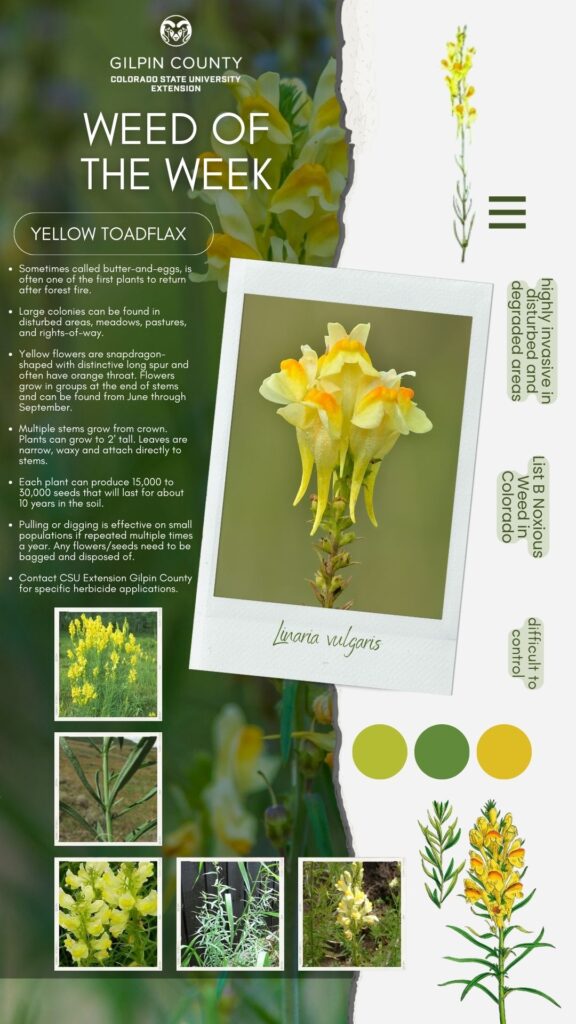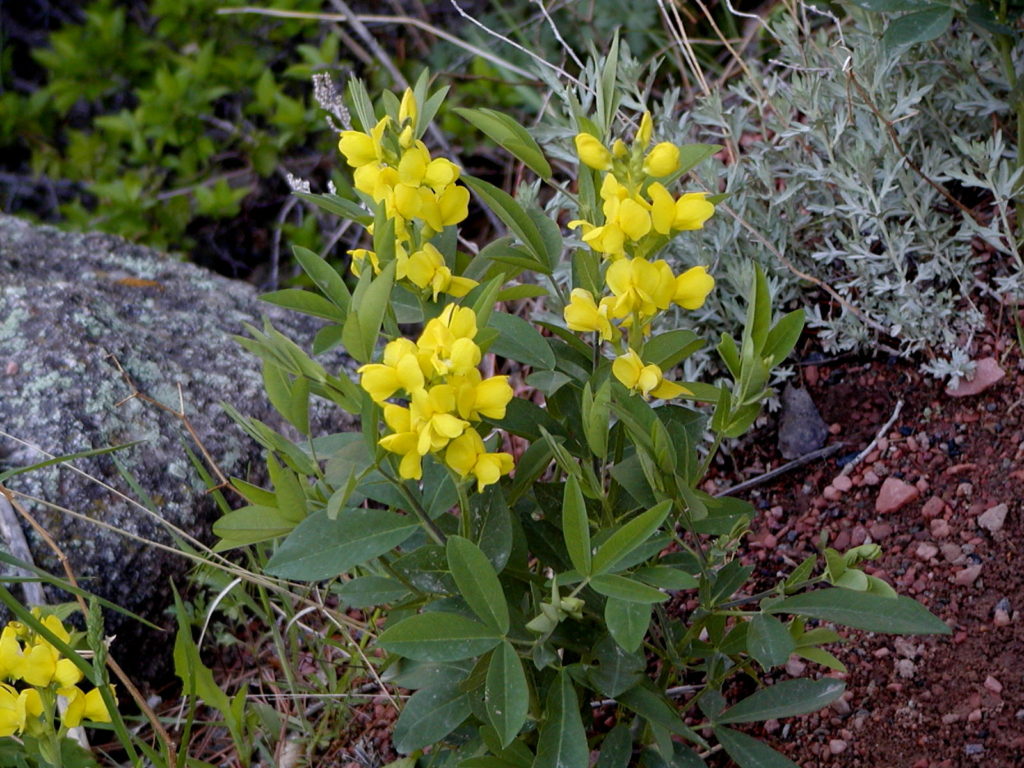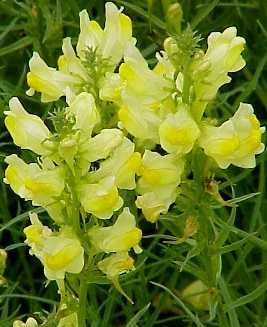
Yellow toadflax (Linaria vulgaris)
State law: Toadflax must be eradicated or contained in Gilpin County.
Caution: there is a native plant, Golden Banner (Thermopsis divaricarpa) which people sometimes confuse with toadflax. If you look at the leaves, it is impossible to mistake them.
The leaves of yellow toadflax are linear. The leaves of Golden Banner have three leaflets (like a clover).
 |
Golden banner (good/native) has leaflets like a clover |
 |
Yellow toadflax (bad/noxious)has linear leaves |


